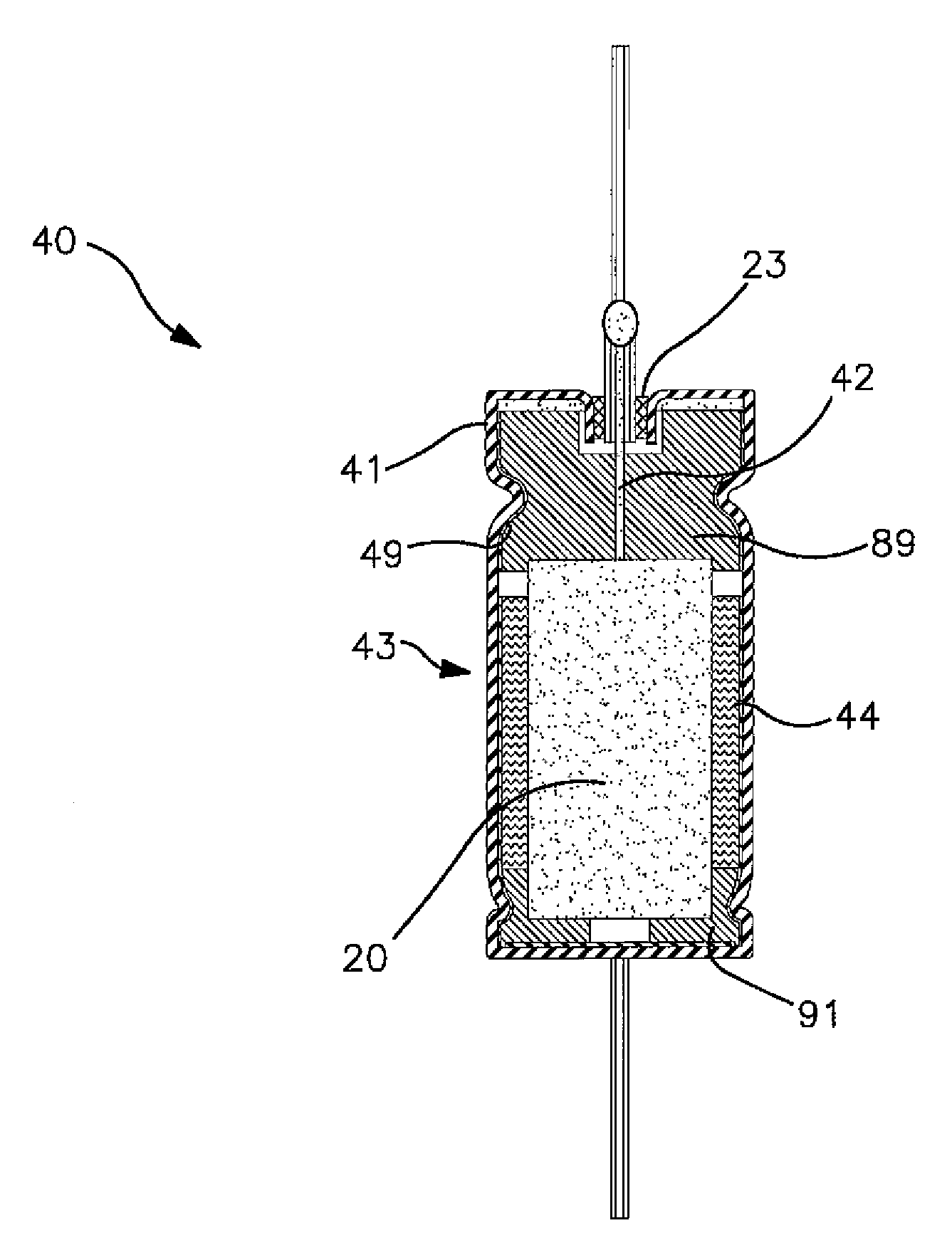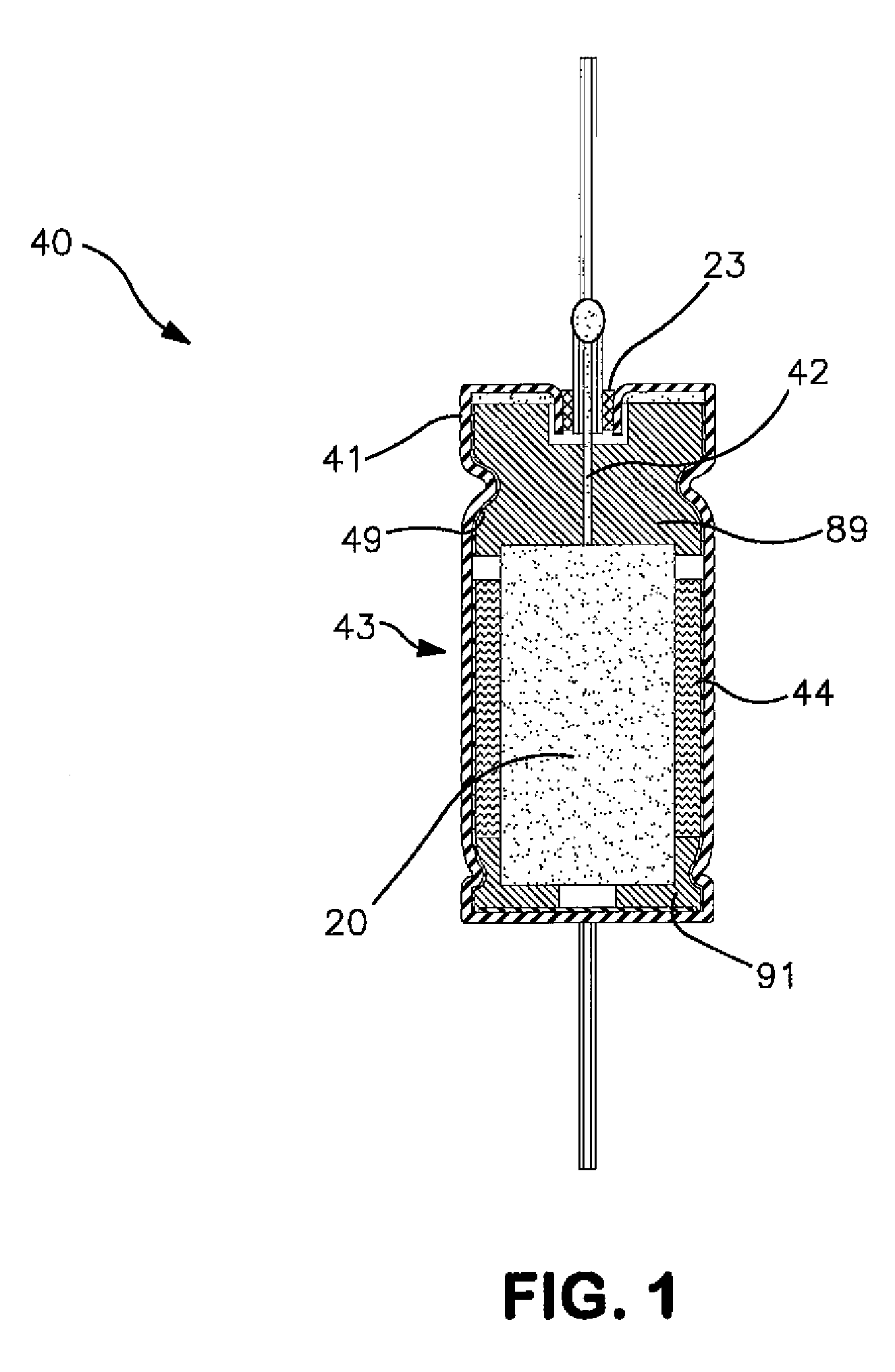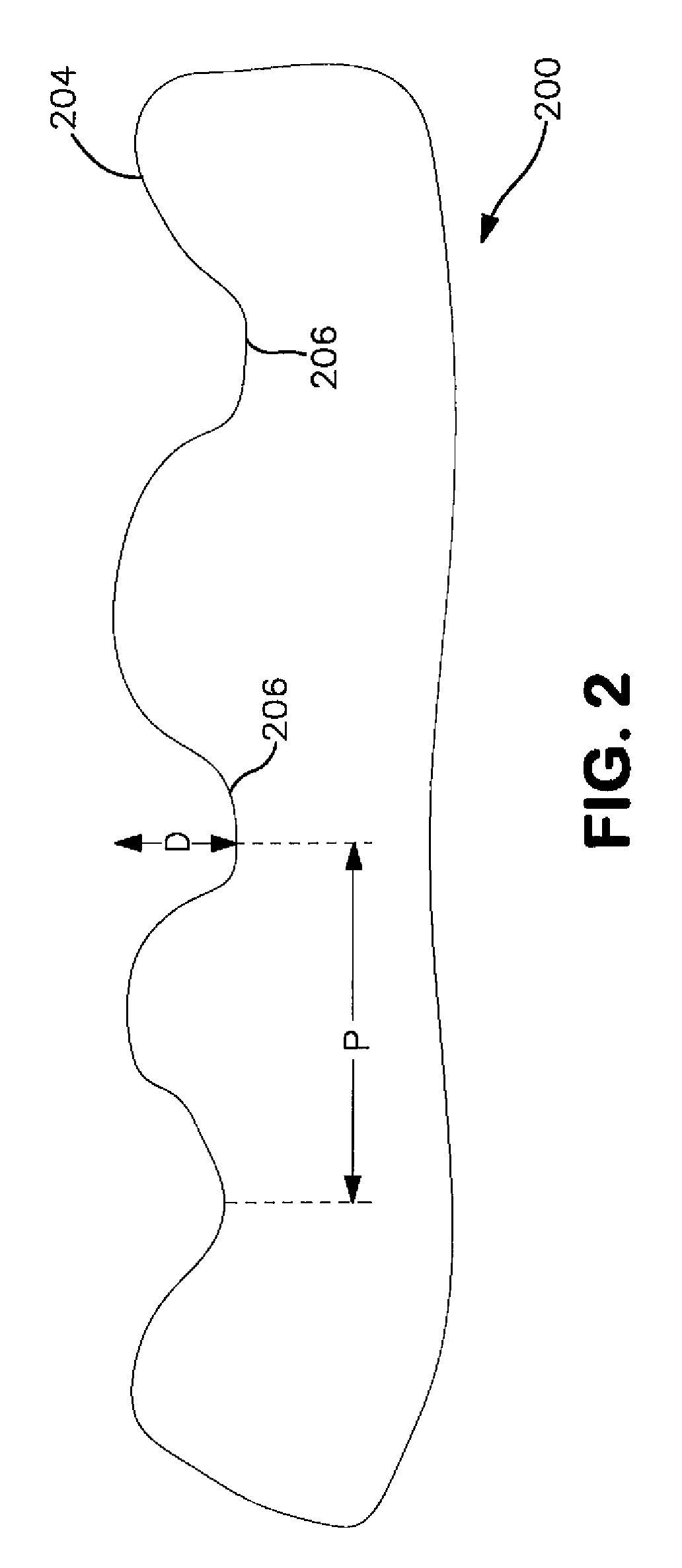Conductive polymer coating for wet electrolytic capacitor
a technology of conductive polymer and electrolytic capacitor, which is applied in the manufacture of electrolytic capacitors, liquid electrolytic capacitors, electrolytic capacitors, etc., can solve the problems of low unit cell voltage of this type of capacitor and easy detachment of coatings
- Summary
- Abstract
- Description
- Claims
- Application Information
AI Technical Summary
Benefits of technology
Problems solved by technology
Method used
Image
Examples
example 1
[0062]Initially, 100 pieces of cylindrical tantalum cans with a size of 18.3 mm (length)×9.1 mm (internal diameter) were sandblasted with a JetStreem Blaster II (SCM System, Inc.). The sandblasting media was black silicone carbide grit having a size of 63 to 106 μm). The media flow rate was 0.5 grams per second via a 3.2-millimeter blasting nozzle. All pieces of cylindrical tantalum cans were sandblasted to a control level 10.7 millimeters (from potential 18.3 millimeters) using appropriate ferrules. The sandblasting time was 20 seconds. These samples were then degreased in water with surfactants in an ultrasonic bath for 5 minutes, rinsed 3 times in deionized water, and then dried at a temperature of 85° C. for 5 minutes. A conductive polymer coating was applied to the microroughened surface of the tantalum cans by dipping the anode into a dispersed poly(3,4-ethylenedioxythiophene) having a solids content 1.1% (Clevios™ K, H.C. Starck). The tantalum cans were filled to the control ...
example 2
[0063]100 pieces of cylindrical tantalum cans were sandblasted as described in Example 1. Thereafter, a conductive polymer coating was formed by dipping the cans into a butanol solution of iron (III) toluenesulfonate (Clevios™ C, H.C. Starck) for five (5) minutes and subsequently into 3,4-ethylenedioxythiophene (Clevios™ M, H.C. Starck) for five (5) minutes. The cans were drained using a vacuum for up to one (1) minute and were put into a drying oven for 45 minutes at 30° C. The resulting structure of poly(3,4-ethylenedioxythiophene) was washed in methanol to remove reaction by-products for five (5) minutes and the tantalum cans were put into a drying oven for five (5) minutes at 85° C. This polymerization cycle was repeated (4) times.
[0064]Once formed, 10 samples of the cathodes of Examples 1 and 2 were then tested for capacitance and ESR in the manner described above. Furthermore, the capacitance and ESR of the samples was also measured after “storage testing” and “temperature / pre...
PUM
| Property | Measurement | Unit |
|---|---|---|
| average diameter | aaaaa | aaaaa |
| diameter | aaaaa | aaaaa |
| thickness | aaaaa | aaaaa |
Abstract
Description
Claims
Application Information
 Login to View More
Login to View More - R&D
- Intellectual Property
- Life Sciences
- Materials
- Tech Scout
- Unparalleled Data Quality
- Higher Quality Content
- 60% Fewer Hallucinations
Browse by: Latest US Patents, China's latest patents, Technical Efficacy Thesaurus, Application Domain, Technology Topic, Popular Technical Reports.
© 2025 PatSnap. All rights reserved.Legal|Privacy policy|Modern Slavery Act Transparency Statement|Sitemap|About US| Contact US: help@patsnap.com



